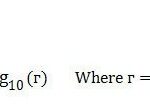What is DRX Inactivity Timer in LTE?
In LTE, the DRX (Discontinuous Reception) mechanism plays a key role in optimizing power consumption and enhancing the battery life of user equipment (UE). Today, I’ll explain the concept of the DRX Inactivity Timer and why it’s important in managing power efficiently, especially for mobile devices.
The DRX Inactivity Timer is part of the DRX process, which is designed to allow the UE (like your smartphone) to enter a sleep mode when there’s no data transmission. This helps save battery life without affecting the quality of the communication. When there’s no need for continuous reception, the device doesn’t need to stay active all the time and can “sleep” or reduce power usage.
So, how does this work in practice? When the UE is communicating with the eNodeB (evolved NodeB), it monitors the traffic in the RRC (Radio Resource Control) connection. If there’s no active data exchange for a certain period, the DRX Inactivity Timer starts counting down. Once the timer expires, the UE will enter a low-power state, and its receiver will stop listening to the network, which significantly reduces its power consumption.
When does the DRX Inactivity Timer start? The timer begins when the device has no data to transmit or receive. For instance, if you’re on a call but there’s a long pause or silence, the timer starts. If the timer reaches its preset value without any activity, the device will enter the DRX cycle and reduce its energy consumption.
What happens when the timer expires? Once the inactivity timer expires, the device enters a low-power state, known as DRX mode. The receiver becomes less active, periodically checking for any incoming data. This reduces energy usage, as the device does not need to continuously monitor the network. However, if there is incoming data or the device needs to send data, the DRX process allows the device to wake up and resume full activity.
Now, let’s look at the impact of the timer:
- Power Efficiency: The primary benefit of the DRX Inactivity Timer is better power management. By allowing the device to sleep during idle periods, it extends battery life, which is crucial for mobile users.
- Delay in Data Reception: One trade-off is that there might be a slight delay in receiving data after the device enters the low-power mode. The device needs to wake up and check the network periodically, which could cause a delay in responsiveness.
- Configurable Timer Values: The inactivity timer can be configured based on the network’s preferences and the device’s power requirements. For instance, a network might choose a shorter inactivity timer to ensure faster data reception, or a longer one to save more battery.
In LTE, the DRX Inactivity Timer is one of the many ways that the network optimizes power consumption for mobile devices. As we discussed in earlier articles, LTE focuses on enhancing the user experience by providing faster speeds and lower latency. The DRX mechanism, including the inactivity timer, ensures that these benefits come with better power management, especially for users on the move.


